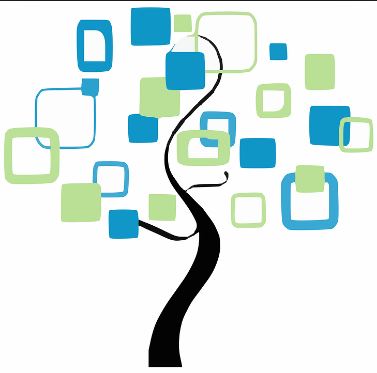
25
JulYour Family Tree
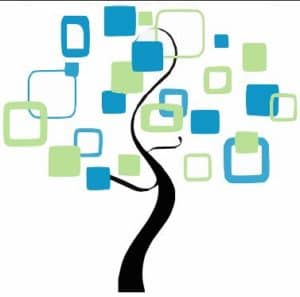 I grew up with an awkward middle name: Lincoln. It wasn’t exactly the pinnacle of cool and hip. As a young child in the ‘70s when most of my friends had middle names like Ann, Marie and Jean, I was well-aware that Lincoln was not a name to be shared out loud if I could help it. The only folks who knew this secret information were the local bank teller and the pediatrician.
I grew up with an awkward middle name: Lincoln. It wasn’t exactly the pinnacle of cool and hip. As a young child in the ‘70s when most of my friends had middle names like Ann, Marie and Jean, I was well-aware that Lincoln was not a name to be shared out loud if I could help it. The only folks who knew this secret information were the local bank teller and the pediatrician.
As is often the case with family history, details began to emerge as I matured. Soon I realized that my dad had the same middle name, as did his father. By fifth grade, when we began to explore our heritage in school, I started asking more questions and gradually the family lore was revealed. Lincoln had been a last name, and the family had wanted to carry that name on – thus the awkward middle name. Why? “Well, you’re related to Abraham Lincoln, of course.” Hold on! What?? That was a game changer. More comments were being tossed around: “Somehow you’re related through the Tupper line.” “Yes, there was an Eaton. I think a Harriet, from Hingham, MA?” “And there is that Mayflower connection, you know.”
Turns out, I didn’t know. Not at that age, but I was beginning to take note. My father didn’t put a lot of clout in genealogy or family lineage. “Be the best you can be, and serve others” was his unspoken motto. For the most part, I agreed. When I was in my twenties, I would not have placed the subject of genealogy high of my list of interests. After I married, I changed my name, replacing Lincoln with my given surname. That horrid middle name was behind me. Still, my husband was curious. Could those stories really be true?
It wasn’t until I had two Eurasian daughters that it seemed important for them to know about their Chinese and American heritage. When they told fellow students at school that they were related to the 16th President of the United States, they were confronted with disbelief. How could someone who looked like them be related? “Well, Lincoln had dark hair too,” I told them. But where were the facts?
I began to gather a few family archives from around my parents’ house: the two volume set of the Tupper Family History, a half-hearted family tree, a list my mother had started connecting me back to General Israel Putnam. I tried to Google the Lincoln family tree. Still, I couldn’t quite make the connection back. While I was collecting pieces that would eventually fold together into the family quilt, I had lots of gaps and unravelings.
It wasn’t until I took a spontaneous trip to the Family History Library in Salt Lake City that the dots started to connect. A volunteer helped me set up an account on the online database called Family Search. Patiently she walked me through, inputting my parents’ information, then my grandparents’. Each piece was verified with the vital records. It took about an hour, but when I walked downstairs, I was given an iPad which connected to a wall display. Lo and behold, up popped the famous people in my lineage… and there was President Abraham Lincoln!
When I returned home, however, I wanted to fill in the tree even more. Good thing there wasn’t any shortage of resources at my fingertips. Not only can you have access to various databases through your library card (search under “Books and More” on the norwoodlibrary.org website for “Databases”), including Ancestry Library. This is the “In Library Use Only” version. Some of the Norwood newspapers are now digitized and available online as well, so one can research family stories in the news.
We also have a genealogical expert, Joe Petrie, who will be offering several one-on-one sessions in the fall for those who would like to learn how to do more in-depth online research. These sessions will be two hours long on select Mondays, Wednesdays and Fridays in September, October, and November. Be sure to contact our Reference Desk (781-769-0200 x110) to reserve a spot. They are offered at no charge. What an amazing opportunity!
For online research assistance, you can also check out Genealogy Online by Elizabeth Powell Crowe. Here you will “discover how to start your search, find specific types of genealogical information on the Web, and use online tools effectively and efficiently.”
Other helpful resources are in print, too. I found one book so easy to use. The whole topic can be a bit overwhelming, but Genealogy for the First Time by Laura Best made it approachable. Best begins with the chapter “Where do I Start?” and she holds the reader’s hand throughout. In her opening words she says, “Genealogy is, metaphorically speaking, one large puzzle. You may pick up the pieces in any order to place them. However, some pieces will be more difficult to place than others and may need to be set aside until other pieces are fitted together to give better reference and framework.”
As you become more engrossed in your research, your questions will become more difficult. Like, did your great-grandfather really come over on the Rotterdam steamer into Ellis Island in 1896? And was his name originally Bremmer before officials changed it to Brimner upon his arrival? They Came in Ships by John P. Colletta, Ph.D. guides you through your ancestors’ arrival records. There are resources that aide with those picky problems too. For example, there is a series of books for a variety of ancestries. A Genealogist’s Guide to Discovering Your Scottish Ancestors by Linda Jonas and Paul Milner is one of many, also available for English, Italian, and German ancestors.
Likewise, if you have deep roots in New England, the Genealogist’s Handbook for New England Research by the New England Historic Genealogical Society might be your cup of tea. And if you’re feeling like you’re hitting a brick wall, The Family Tree Problem Solver by Marsha Hoffman Rising could offer a ladder up and over those problems.
If you’re already an expert in genealogy, the book Your Guide to Cemetery Research by Sharon DeBartolo Carmack would not be a surprise to you. That said, I was amazed at the research that people do right at the gravesite. Carmack provides guidance for everything from Records of Death and how to read them, to searching the cemetery for clues and rubbings.
Of course now that people are rushing to get a 23andMe personalized report, there are family stories emerging that were hidden for years. Sometimes they can be very revealing. A popular memoir by Dani Shapiro called Inheritance: A Memoir of Genealogy, Paternity, and Love addresses this very topic. When Shapiro was doing her own genealogical research, she submitted her DNA for analysis on a whim, only to discover that her “beloved deceased father” was not her biological one. Shapiro addresses those secrets within families and what it means to unlock them.
That day in Salt Lake City I was so grateful to have some of the pieces of my family puzzle come together, but that didn’t mean the whole puzzle was complete. Only part of it. If I choose, I can head down more rabbit holes with the family tree. If you decide to do the same, I hope some of these resources hold the key.
Nancy Ling is the Outreach Coordinator at the Morrill Memorial Library in Norwood, MA. Look for her article in the July 25, 2019 issue of the Transcript and Bulletin.

18
JulWe’ve Come a Long Way, Baby – In Women’s Sports

I am, perhaps, one of the most uncoordinated women on earth. Oh, yes, I had the distinction of managing my seventh-grade softball team, but in retrospect, I suspect my team gave me the job as a manager because voting me the position of manager kept me from either guarding a base or handling a bat.
I have somehow accomplished a few sports during my lifetime. I learned to ice skate at the tender age of five on a meandering city park pond in the heart of Worcester. I managed to straighten my buckling ankles and have lovely childhood memories of taking care of my gorgeous pair of lace-up, white skates. I continued to skate for fun after we moved to the West Coast and into my pre-teens on the public indoor ice close to my neighborhood in Berkeley, CA. The San Francisco Bay Area was also where I learned to swim and play tennis in free summer camps.
I also roller-skated everywhere as a young girl, traveling on expandable metal roller skates with the skates’ key dangling from a piece of ribbon around my neck. Moving to the hilly suburbs, however, put a damper on that activity when, used to flat, city streets, the brakes were applied to my skating when I fell and broke my left arm for the third time.
As a high-schooler, I learned to ski in the Sierra Mountains near Lake Tahoe. I continued for years, leading my young daughters down New England slopes. Yet, I soon lost my ski partners when they abandoned me to the double black diamonds on the slopes in Maine, Vermont, and New Hampshire. I bought myself cross-country skis instead. I fell in love with the solitude of whispering pines and quieter, slower trails, but gave it up when falling became too threatening for 60-year old bones.
I had the distinction of earning a high school Varsity letter at the Senior Sports Banquet in June 1970. I received the honor because I had spent the season expertly, and proudly, handling my football statistician’s clipboard, while managing to send beaming smiles to my handsome Varsity team boyfriend.
Coincidentally, in the wake of a star-struck nation obsessed with the Women’s World Cup win, I was suddenly struck by the fact that none of my high school girlfriends had been members of a high school sports team, let alone a soccer team. Our high school was a suburban, middle-class institution. We went to school just across the bay from San Francisco and just north of some of the most progressive school systems in the country. Yet, there was not one high school sports team for girls. I verified that fact by finding my high school yearbook online. Evidence proved that male classmates joined the wrestling, baseball, football, tennis, basketball, golf, and track teams. My female friends (active, academically solid students) were cheerleaders, artists, singers, actors, and writers, but not one high school athlete was among us. (Interestingly, some New England high schools and others across the country supported girls’ sports teams well before the 70s. My husband, Gerry, remembers many female athletes in his high school in Framingham.)
I soon realized that our high school, and probably many other suburban California schools, did not treat girls’ sports with the same respect (and money – mostly money) that they treated boys’ sports. We had Phys Ed every day – playing basketball in the gym, archery behind the school, and softball on the fields. We did not, however, play sports against other high school teams.
Congress passed Title IX of the Education Amendments Act in 1972 (guided into law by Congresswoman Patsy Mink of Hawaii). Title IX is a federal law stating that “no person in the United States shall, on the basis of sex, be excluded from participation in, be denied the benefits of, or be subjected to discrimination under any education program or activity receiving Federal financial assistance.” In their online July 6 edition, The Guardian wrote that, “by demanding that schools provide opportunities for young girls to play sports and mandating that universities provide equal scholarship funding, Title IX created opportunity and incentive” for women’s sports in a void that faced many young women before 1972.
Well, congratulations, Congress. This was two years after I graduated from high school, and it changed the lives of young women across the country.
Of course, the rest is history in women’s sports. In 1974 the Women’s Sports Foundation was established. (Billie Jean King defeated Bobby Riggs in 1973.) In 1983, Sports Illustrated named track star Mary Decker as the Sportswoman of the year. In 1985, women were inducted into the Basketball Hall of Fame. The Women’s Volleyball League was established in 1986. In 1972, one in 27 girls participated in sports. Today the number is two in 5, a dramatic increase of over 900%.
In 1991, the Women’s World Cup for soccer was established, and the United States won that competition. The Women’s World Cup is held every four years, and the US team won eight years later in 1999 and again in 2015. 24 women’s world teams participated in 2019, and the US team won once again, this time four years later, for consecutive wins. On July 6, The Guardian wrote: “the talent pool for female soccer players in America appears bottomless.” Title IX “has nurtured several generations of women and girls.”
Beginning in 1964, the American Youth Soccer Association (AYSA) ignited a flame across the country. Other organizations were taking hold in every community across the country (the Massachusetts Youth Soccer Association among them). My young daughters were on town soccer fields in kindergarten in the mid to late 1980s where I chatted with other parents, sometimes frozen or dodging raindrops. I admit that I often chose to be home making dinner when my daughters’ father was coaching, but I supported their sports participation, nevertheless. Without Title IX, my girls would not have gone on to run cross-country or play college rugby, among other sports like swimming and skiing.
Congratulations, Congress. And thank you for changing women’s lives in 1972.
If you’d like to read about some of our amazing US women’s soccer players, the library has many biographies, including one about Hope Solo. The youth collection contains a plethora of books about soccer, meant to encourage girls and boys alike. Without Title IX, young female sportswomen would not be making history in the United States.
Congratulations, Congress.
Charlotte Canelli is the Director of the Morrill Memorial Library in Norwood, MA. Look for her article in the July 19, 2019 issue of the Transcript and Bulletin.
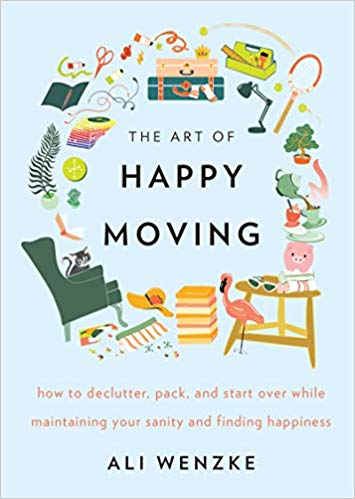
11
JulHappy Moving Day!
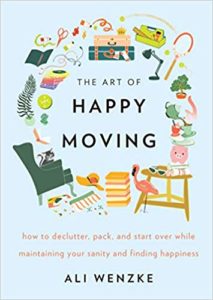 Have you ever had the experience of finding the exact right book at the exact wrong moment? And I don’t mean those times when you’re sure you put the book down somewhere where you knew you definitely wouldn’t forget it, and you know you’ll find it eventually but you’ve looked EVERYWHERE and have given it up for lost, so you finally pay the late fee at the library and get back in your car only to find it under the front seat.
Have you ever had the experience of finding the exact right book at the exact wrong moment? And I don’t mean those times when you’re sure you put the book down somewhere where you knew you definitely wouldn’t forget it, and you know you’ll find it eventually but you’ve looked EVERYWHERE and have given it up for lost, so you finally pay the late fee at the library and get back in your car only to find it under the front seat.
Instead, I mean those occasions when you don’t even know you should be looking for a book and the universe intervenes to drop into your hands the book that perfectly fits your situation…only about two days after it would have been really useful.
Friends, I am living that moment as we speak. A few days ago I was standing at the New Nonfiction shelf on the library’s first floor (at the bottom of the staircase, before you walk into the Fiction section, if you’re interested), just minding my own business and turning a few books face-out to attract readers, when I found it. I found the book that, had I had it two months, two weeks, or even two days earlier, would have made my life much less stressful. Even if I didn’t have time to follow all the practical advice in the book, I would have at least had the mental comfort of the author’s light-hearted prose. But no. I found “The Art of Happy Moving: How to declutter, pack, and start over while maintaining your sanity and finding happiness,” by Ali Wenzke, literally the day after I moved.
Wenzke’s book isn’t an exact how-to book for my situation – she has a lot of experience with cross-country moves and I only moved locally within the Boston area, for instance – but she’s got a lot of good advice about how to prepare for the move, checklists for moving day itself, and even pro tips for how to settle into your new home and neighborhood. It’s also a quick read, I’m already halfway through and I’ve been busy unpacking.
More than anything, “The Art of Happy Moving” is a moral support kind of book. Other books and websites get more into the nitty-gritty of evaluating your finances before you buy a house, how to budget all the different costs of home ownership, etc, but the strength of Wenzke’s book is that it feels like having a conversation with a trusted friend who has absolutely been there before, and who knows how to get through a move not only unscathed, but also better off on the other side.
And the real showpiece of Wenzke’s book? “The Art of Happy Moving” is chock-full of great advice for how to do every step of the moving process – with children. From making regular (even non-moving-related) decluttering into a fun game, to discussing the move with kids, to helping them integrate into their new school, Wenzke gives real-world advice that is absolutely worth checking out.
So, how would my move have gone differently if my timing hadn’t been so ironic? Things probably would have shaken out differently in a number of ways. For instance, having an official timeline checklist would have been helpful. I also might have narrowed down my search to a shorter list of towns earlier in the process, saving myself time not looking at towns less likely to fit my lifestyle.
One of this book’s chapters is called “The secret to happy moving: get rid of everything you own,” and she’s not really kidding. I had actually started decluttering over the winter, getting rid of things that didn’t “spark joy,” a la Marie Kondo. I also started packing well in advance of my move, but by the time I got to moving day I wished I’d gotten rid of even more.
Luckily for me, Wenzke includes a number of chapters aimed at the post-move reader, so my timing might now be so unfortunate after all. Of particular interest are her chapters on arranging your new house to be a happy home with special places for your family and for entertaining, and on how to meet people and make friends in your new town.
Kitty and I are settling into our new place – and yes the book does have a chapter on moving with pets – and getting back to our routine after the controlled chaos of moving. Some boxes were packed so long ago that I’ve forgotten what’s in them, so unboxing feels a little like opening gifts. I’m glad to be moving on to the next step in the process, and even though moving is a necessary activity it’s not something I recommend if you can help it. However, if you’re contemplating or faced with a move, I do recommend picking up a copy of “The Art of Happy Moving.” The Norwood library owns the hard copy, plus both the ebook and e-Audiobook versions are available digitally through hoopla, which is accessible to all Norwood residents. Happy moving day!
Liz Reed is the Adult Services Librarian at the Morrill Memorial Library in Norwood MA. You can read her article in the Thursday July 11 edition of The Transcript Newspaper.

8
JulNow You’re Playing with Power
 My parents had just picked me up from my friend’s house that warm September night in 1989. When we got home and walked through the door, my parents told me I should go right to my room. “Huh?” I had thought to myself, “I didn’t do anything bad (well… this time anyway). However, being a six year old, and exhausted from a day of playing with my friend, I didn’t think too much about their request and headed up the staircase to my room. When I opened the door, both of my brothers were smiling at me, and that’s when I saw it…
My parents had just picked me up from my friend’s house that warm September night in 1989. When we got home and walked through the door, my parents told me I should go right to my room. “Huh?” I had thought to myself, “I didn’t do anything bad (well… this time anyway). However, being a six year old, and exhausted from a day of playing with my friend, I didn’t think too much about their request and headed up the staircase to my room. When I opened the door, both of my brothers were smiling at me, and that’s when I saw it…
On the television stand was a grey box with a red light to the left hand side of it, two square shaped controllers each connected to the grey box by black wires, and up on that now antiquated CRT television monitor with the scan lines running down it, was that familiar logo- Super Mario Bros. I remember flipping out with excitement; my birthday was not for another week, which really added to the surprise. They had all pitched in to get me a Nintendo Entertainment System (or, as you fellow gamers affectionately call it, the NES) and did I ever love it!
My love for video games never really faded after that either. It might strike some of you as a bit odd, that a thirty-five year old man with a wife and two kids would still play video games, but in fact, many adults still play video games. According to the Entertainment Software Association, 65% of Americans play video games, and the average age of gamers is 32 for men and 34 for women. Video gaming, though traditionally thought of as a predominantly male-centered activity, is not, in fact, a boys’ club. The Entertainment Software Association reports that 46% of all gamers they surveyed were female.
Put the statistics aside though, and I think the joy of video games boils down to a pretty simple philosophy. I don’t think anyone, regardless of their age, should ever outgrow having fun. Here at the Morrill Memorial Library, we have been adding many new items to our “Library of Things” collection for kids, adults, and families to unwind and have some fun.
With that mentality in mind, I knew one of the first items I wanted to add to the ever growing Library of Things collection was an NES Classic. This system is a re-release of the original NES, but smaller, and comes with 30 of some of the best NES games from the 80s and early 90s pre-loaded into it. The system also supports 1080p HDMI output, so the classics have never looked better! The little device has a great spread of iconic games, sporting Super Mario Bros. 1, 2, and 3, The Legend of Zelda, Punch-Out!, Techmo Bowl, and Double Dragon II. Two of my personal favorites on the system are Megaman 2 and the gothic vampire-hunting classic, Castlevania. Though not all the games on the collection are necessarily suitable for young children, Bubble Bobble is a great two-player co-op for the kids, and Kirby’s Adventure, one of the last games released during the NES’s original lifespan, is great fun. Of course, all three Mario Bros. have aged gracefully (especially 3) and are still fun for all ages.
Though the NES is, and always will be, an incredible video game system, its follow-up system, the Super Nintendo Entertainment System (or SNES for short) is, to me, gaming perfection. The mid to late 90s were an awesome time to be a gamer, and our SNES Classic will let you relive some of the best classics from that era, or experience some of them for the first time. First off, it comes with Star Fox 2, which was in development and was planned for release in 1995, but never saw the light of day. Twenty-two years later, it has been released and is included on the SNES Classic system. Fans of role playing games (RPGs), will particularly love the SNES Classic because it features some of the greats like multiplayer action RPG Secret of Mana, the wonderfully fun and rare Super Mario RPG, and the critically acclaimed Final Fantasy III (6 in Japan). Finding the original cartridges for these three games is difficult and expensive, so the SNES classic is a bargain for these three titles alone. Super Mario World, Mario Kart, and Kirby Superstar are great games for kids. The SNES Classic also has two of my all-time personal favorite games ever- Legend of Zelda: A Link to the Past, and the flawless masterpiece, Super Metroid.
We own a Nintendo Switch at the library as well! Our Children’s department has it for older kids and teens to come and play with after school hours. It does not circulate, but kids and teens are welcome to use the system in the library if they bring their library card. We set it up to a TV screen so up to four players can enjoy it and we have a host of really great games like Mario Kart 8 and Super Smash Bros. Ultimate. If you are looking for a safe place to cool down and have fun this summer, be sure to drop by the library and ask about using the Switch at the Children’s desk.
In June, the library partnered with Impact Norwood for a High School finals “de-stressing” program. We brought the Nintendo Switch system to the High School for students to play with and unwind before going back to finish their finals. Teens were really excited to see the system and games, and had a blast playing them. We are always looking for ways to reach out to the community and bring the library to YOU, so we hope to partner with them again, and other organizations, in the near future. I’m also excited to announce that we have just added a Nintendo Wii system for checkout to our collection. Our Wii comes with the system, two controllers, and five games.
Here at the Morrill Memorial Library, we offer so much more than just books. I hope you will check out some of the great gaming options we have added to our collection. The Sega Genesis Classic system and Oculus Quest are being released just around the corner, so stay tuned. Remember, you are never too old to have fun!
Brian DeFelice is the Information Technology Librarian at the Morrill Memorial Library in Norwood, MA. Look for his article in the July 3, 2019 issue of the Transcript and Bulletin.
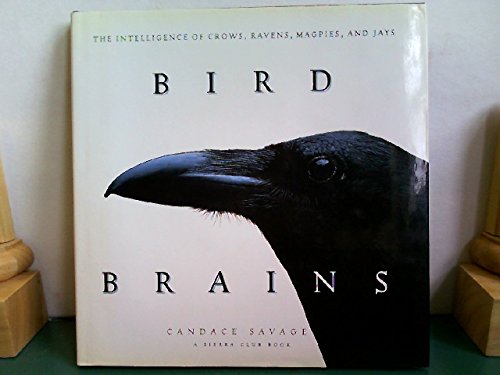
27
JunCaw-Caw-Caw-Caw-Coodle-Yah
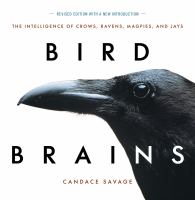 A few years ago, when our eldest granddaughter was mimicking sounds and words, I delighted both of us by teaching her to “caw-caw” like a crow. Being an ardent birder, my husband Gerry taught her to sing “fee-bee” just like an Eastern Phoebe that shares her name. Sitting outdoors in the fresh morning air, we pointed out sequences of Osprey chirps and the sing-song lyrics of an Eastern Towhee (“drink-drink your tea!”)
A few years ago, when our eldest granddaughter was mimicking sounds and words, I delighted both of us by teaching her to “caw-caw” like a crow. Being an ardent birder, my husband Gerry taught her to sing “fee-bee” just like an Eastern Phoebe that shares her name. Sitting outdoors in the fresh morning air, we pointed out sequences of Osprey chirps and the sing-song lyrics of an Eastern Towhee (“drink-drink your tea!”)
I’m an amateur birder, absorbing just enough to detect a cardinal flitting over the yard or an eagle’s nest high over the highway. When I had some time recently to listen to an episode of one of my beloved podcasts (Ologies, with science-writer Alie Ward), I chose Corvid Thanatology. In other words, the study of crow funerals.
Obviously, the episode wasn’t as depressing or morbid as you’d think… and neither are crows. Host Alie Ward has her own unique sense of humor and most of the scientists, specialists, and researchers who join her do, too. Her guest for the October 29, 2018 episode was wildlife researcher Dr. Kaeli Swift. Listening, and then reading much more later, I learned that a crow is an extraordinary bird that mourns its dead. Crows are playful and mischievous, but they also mate for life. They are, frankly, one of the most intelligent birds on Earth.
Crows are in a family of birds named the corvids, a group that contains 120 species. The most typical are crows, ravens, jays, magpies, rooks, and jackdaws. All corvids are remarkably smart, and their skills include using tools and recognizing themselves in mirrors. Those two abilities are possessed only by humans and the more clever mammals.
Corvids’ brains, in relation to their body size, are nearly the same ratio to you and I. Corvids are located all around the world, unlike some species of birds found only in certain geographic areas, and the largest corvid is the Common Raven that can weigh in at over 3 pounds. Corvid fossils have been identified from 17 million years ago!
The first book to reach for, if you want to learn more about astonishing corvids, is Bird Brains by Candace Savage. Ms. Savage is a prolific writer in the world of wildlife, and her repertoire includes works about bees, wolves and Grizzly Bears. Bird Brains was initially published in 1995, but Savage revised and updated it in 2018 and the paperback is rich with large, full-page illustrations of crows, magpies, ravens, and jays. On one of its first pages you’ll find the words of Reverend Henry Ward Beecher: “If men had wings and bore black feathers, few of them would be clever enough to be crows.” This undoubtedly is Savage’s opinion, as well.
In 2005, Savage wrote Crows: Encounters with the Wise Guys of the Avian World. This book is a compilation of first-hand accounts and poetry about crows. My favorite is a poignant story, Aireala, in which the author relates her story of profound grief and the healing powers of the “bright, quirky” appearance of a beautiful black baby crow who stayed with her for a brief, but valuable, time.
John Marzluff is a professor of wildlife science and has also written two books about corvids: In the Company of Crows and Ravens (2005), and Gifts of the Crow (2012). In his second book, he explains that it is the understanding, emotion, and thought that corvids demonstrate that allows for the similarities to human behavior.
Bernd Heinrich, well-known naturalist and professor emeritus of biology at the University of Vermont, has meticulously studied ravens. In Mind of a Raven (1999), Heinrich describes his passion, especially in observing them for hours on end. He writes in One Wild Bird at a Time (2016) that while crows “can be impressively clever,” the raven has a “brain capacity roughly double that of the crow.” However, research shows that ravens are more solitary and individualistic. Crows, on the other hand, have more of a flock or community mentality. American Crows will sometimes roost with another hundred thousand birds. They are also known as devoted parents who let their young remain “home” for months or years.
Noah Strycker has been a bird-watcher much of his 33-year life. In his late twenties, he wrote The Thing with Feathers (2014), an engaging book that teaches us that all birds are brighter than we would think. He adds that corvids, especially, are not only intelligent but playful and they are mischievous thieves, as well. Most books about corvids tell tales of their playful swiping and hiding of objects.
In A Conspiracy of Ravens (2014), the University of Oxford illustrates over one-hundred birds with their collective names. Of course, most people have heard of a “rookery of penguins” and a “gaggle of geese.” But have they heard of an “ostentation of peacocks” or an “ascension of larks?” No one really knows why it’s a “murder” of crows. Some think it’s due to the black plumage or a crow’s affinity for scavenging for carrion.
The editor of Birding Magazine, Ted Floyd, writes 200 lessons about 200 birds in How to Know the Birds (2019). In one such lesson, Floyd explains that all five species of corvids (crows and ravens), are entirely black, including their eyes, bill, and feet. The pigment, or melanin, has many advantages of strength and resistance to bacteria.
Another fun book that can be read in lessons, or chunks, is BirdNote (2018) – stories of birds on BirdNote produced by PRI or the Public Radio Institute. These are the same stories that were broadcast by Seattle-Tacoma public radio and are now listed to across 200 radio stations in the US and Canada. One story tells the tale of “giant avian slumber” parties.
While you are at it, you might as well read this small book: aaaaw to zzzzzd: the Words of Birds by John Bevis. In it, you’ll learn that while the Fish Crow belts out “cah,” the American Crow exclaims “caw” or “caw caw caw caw coodle yah.” Try teaching that longer version to your grandchild!
Charlotte Canelli is the Director of the Morrill Memorial Library in Norwood, MA. Look for her article in the June 27, 2019 issue of the Transcript and Bulletin.
